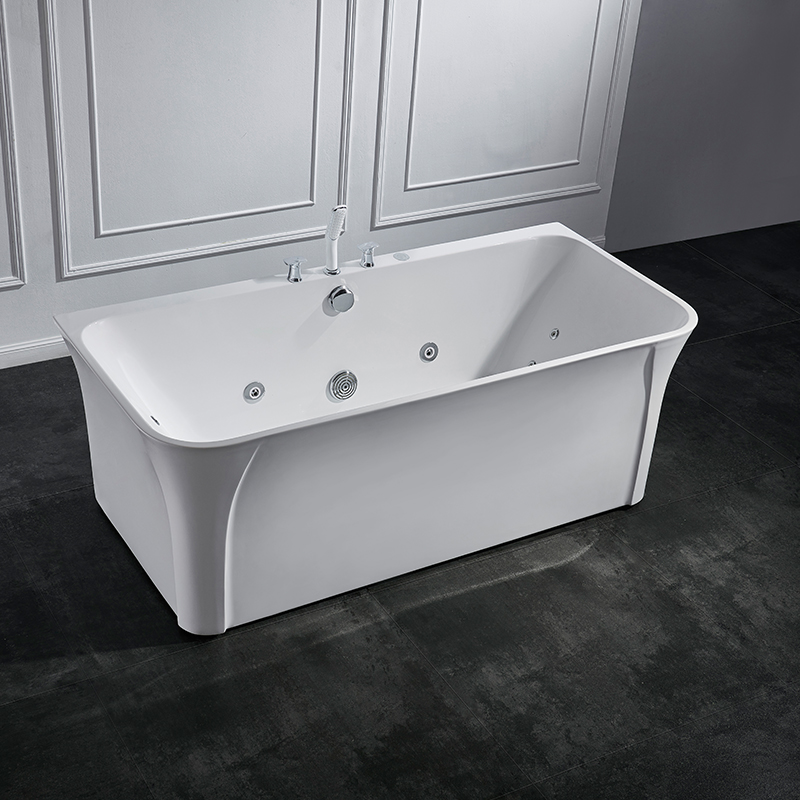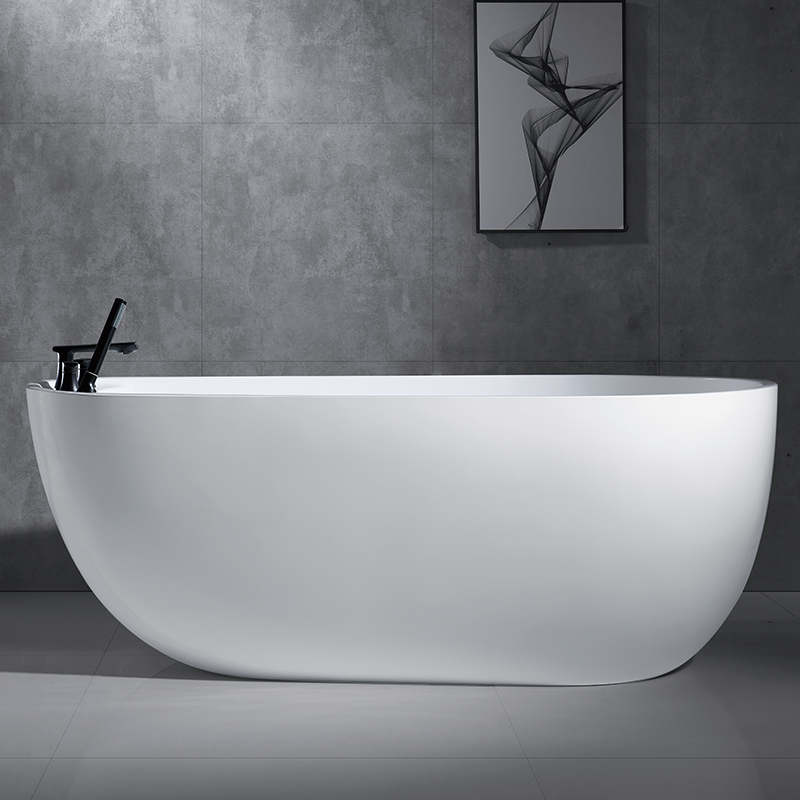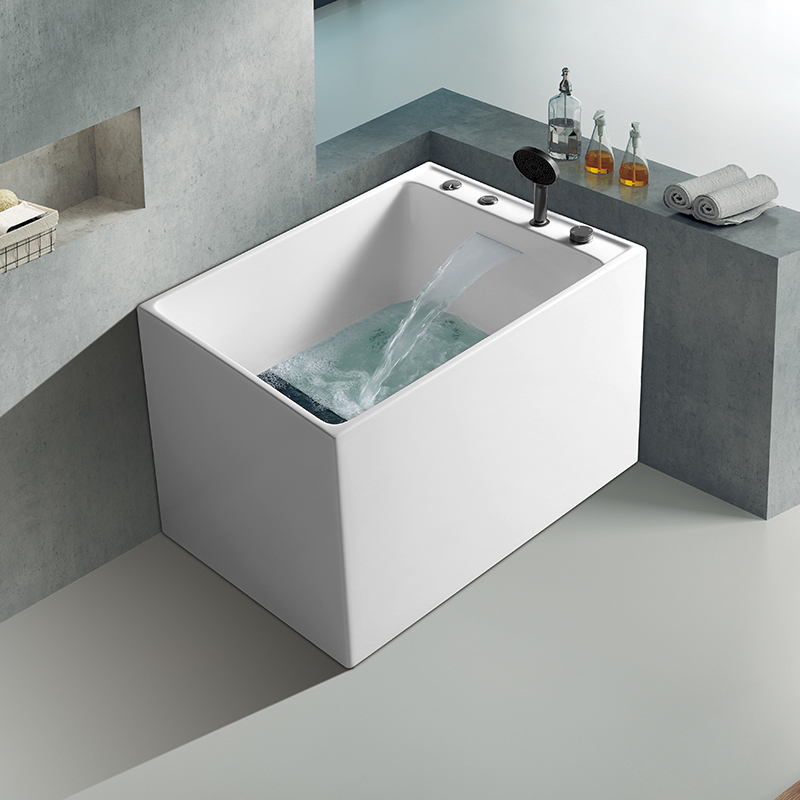There are significant differences between Japanese deep soaking bathtubs and ordinary bathtubs in terms of material craftsmanship, design concepts, user experience, cleaning and maintenance, as well as cultural connotations. The following is a systematic comparative analysis:

一、 Materials and Manufacturing Processes
Project
Japanese-style deep soaking bathtub
Ordinary bathtub
Main material
It is mostly made by firing carefully selected kaolin at high temperatures and belongs to high-end ceramics
Common ones include acrylic, cast iron, steel plates, artificial stone, etc
Process characteristics
Handmade entirely, emphasizing details and artistry, non-toxic and lead-free
Industrialized mold production has a high degree of standardization
Physical properties
High-temperature resistant, anti-corrosion and anti-rust, anti-aging, with a dense and smooth surface
Some materials have poor heat resistance and are prone to scratches or rust
Environmental protection and safety
High-temperature sintering, non-toxic and lead-free, meeting health standards
Some low-end products may have chemical residues.
二、 Design and Functional Differences.
Dimension"
Japanese-style deep soaking bathtub
Ordinary bathtub
"Deep design"
The deep soaking design can completely submerge the body and promote blood circulation
The depth is relatively shallow, usually only half of the body can be immersed
Styling style
Blending Japanese Zen and natural aesthetics, the lines are smooth and simple
The design leans towards modernity or European style, emphasizing spatial adaptation
Ergonomics
The bottom arc-shaped design fits the human body closely, providing a comfortable sitting experience and is suitable for long-term bathing
Most of them are flat or slightly curved, and the comfort level is average
Functional positioning
Emphasizing health preservation, meditation and relaxation, it is a "healing" type of bath
It mainly focuses on cleaning and basic bathing, with relatively single functions.
三、 Comparison of User Experience
Project
Japanese-style deep soaking bathtub
Ordinary bathtub
Bath effect
A large amount of water and deep soaking can help relieve fatigue and improve sleep
The depth of the bath is limited, and the health-preserving effect is relatively weak
Thermal insulation performance
Ceramic is thick and solid, has good heat insulation, and the water temperature drops slowly
Materials such as acrylic dissipate heat relatively quickly
Spatial adaptation
Customizable, suitable for non-traditional Spaces such as courtyards, balconies, and tea rooms
It is mostly fixed in the bathroom and has a large space limitation
Installation and handling
It is relatively lightweight, easy to disassemble and move, and suitable for mobile use
It is usually fixedly installed and difficult to move。
四、 Cleaning and Maintenance。
Project
Japanese-style deep soaking bathtub
Ordinary bathtub
Cleaning difficulty
The surface is smooth and dense, making it difficult for dirt to adhere and easy to clean
There are many corners and seams, making cleaning very difficult
Antibacterial and mold-proof
Ceramic material is not prone to bacterial growth and has strong antibacterial properties
The surface of acrylic is prone to aging and requires regular care
Maintenance cost
It basically requires no special care and has low maintenance costs
Special cleaning agents are required and the maintenance cost is relatively high。
五、 Culture and Added Value。
Japanese-style deep soaking bathtub
Carrying the Japanese "soup culture" and the Eastern philosophy of health preservation, it emphasizes "calming the mind, purifying the body and nourishing the spirit".
It is often used in tea ceremonies, meditation, and Japanese-style Spaces to enhance the atmosphere of the space.
It can be used as an artistic display item, combining practical and aesthetic value.
● Ordinary bathtub:
It is more functional and has a relatively weak cultural attribute.
Lacking personalization and emotional connection, they are mostly "tool-type" items。
六、 Recommendations for Applicable Groups and Scenarios。
Recommended population
Recommended scenarios
Families pursuing a high quality of life
Master bedroom suite, sunroom, courtyard, tea room
Health preservation enthusiasts and middle-aged and elderly people
Health and wellness space, physiotherapy room, hot spring homestay
Users who like the Japanese style
Japanese-style decoration, Japanese garden, and hot spring house design
Commercial operators (such as homestays, spAs
Enhance customer experience and create differentiated services。
Summary: List of Core differences。
"Comparison dimension"
Japanese-style deep soaking bathtub
Ordinary bathtub
Material
Kaolin ceramics, hand-fired
Acrylic/cast iron/steel plate
Depth and bath experience
Deep soaking design, full-body immersion, excellent health care effect
Shallow brewing is the main type, and it is based on functional principles
Cleaning and maintenance
Easy to clean, strong antibacterial property and low maintenance cost
It is difficult to clean and requires regular care
Transportation and installation
Easy to disassemble and move, with high flexibility
Fixed installation, difficult to move
Cultural value
It embodies Zen and health preservation culture and has a strong artistic sense
Function-oriented, with weak cultural attributes
Applicable scenarios
Families, bathhouses, homestays, courtyards, etc
Ordinary household bathroom
After-sales service and Supply
Factory direct sales (such as Jingdezhen Wanghong Ceramics), with complete guarantees
The channels are diverse, but the quality varies greatly。
🌿 suggestions and extensions
If you are in pursuit of a high-quality life, home health care or spatial aesthetics, a Japanese-style deep soaking bathtub is a better choice. It is recommended to contact professional ceramic enterprises (such as Jingdezhen Wanghong Ceramics Co., LTD.) for customization to ensure a perfect integration of size, style and space.
Future trend: With the rise of the concepts of "healthy home" and "slow living", Japanese ceramic bathtubs that combine aesthetics, health preservation and practicality will become an important configuration in high-end bathrooms and health and wellness Spaces.




